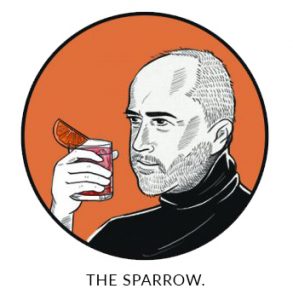Havana is the home of the mojito.
Regardless of which version of the origin you prefer, it is in the capital city of Cuba where the mojito is at its vibrant best. Rum is recognized as being first distilled in the 17th century as a means for sugar farmers to find a use for molasses, a by-product of sugar processing. However, an earlier version, known as burning water or firewater (aguardiente), plays a part in the earliest mojito story.
It begins with Sir Francis Drake who arrived in Havana in the late 16th century with a ship full of scurvy and dysentery. The local remedy included firewater, lime and sugar with some added mint to cut the taste of the crude tipple. Known afterwards as El Draque, it may be history’s first recorded cocktail.
Following the Spanish – American War of 1898 there was an increase 9f American influence in Cuba. This led to an increase in rum drinking in the US and during the years of prohibition, 1920 – 1933, many Americans found travelling to Cuba a good option to satisfy their urges. It may be during these years the mojito developed in popularity.
La Bodeguita del Medio in Havana claims to have made the first mojito when it opened in 1942, but, according to Websters dictionary, the name goes back to the 1930s.
The name may relate to the African word for magic or spell, mojo, with mojito meaning little spell. This makes sense to me but it may have its origins in a Spanish Cuban word, mojo, (from the Spanish, mojar) meaning to wet or a sauce.
RECIPE
A mojito is a little like a white rum collins.
60mL white rum – stick to Havana Club for authenticity
60mL lime juice
60mL soda water
4 or 5 mint leaves
1 tsp sugar – use raw or cane sugar where possible
Sprig of mint for garnish
Place the mint leaves, lime juice and sugar in a Collins glass. Use a muddler to gently crush the leaves to release their oils. Add some crushed ice then the rum. Top with soda water and garnish with a sprig of mint. If you are concerned about the sweetness, add a few drops of Angostura Bitters to take the edge off.
It is likely that Hemingway drank a mojito at some stage of his life. However, the great Philip Greene, in his Hemingway Cocktail Companion, To Have and Have Another, is quite clear that there is no evidence that he ever drank one…but he can’t prove it. So why do we care? The controversy lies in a framed piece of paper at the Havana bar La Bodeguita del Medio. The paper states, “My Mojito in La Bodeguita My Daiquiri in El Floridita”. It is signed (?) by Hemingway and has been a draw card for the bar for many years. Greene’s argument comes from there being no photos of Hemingway at this bar (although there are many of him in other bars) and there is no reference to it in any writing by Hemingway or about Hemingway. Also, he was not inclined towards sweet drinks which of course a mojito certainly is.
Whether the piece of paper is real or a fake perhaps doesn’t matter as the paper and the bar where is sits has become part of Hemingway folklore. Just as you can’t definitively prove the Loch Ness Monster does not exist, so it is with Hemingway’s connection with La Bodeguita and the mojito.
Although I have often enjoyed a mojito, I had not made one until recently. I saw them as something a little complicated to make with all those ingredients and the whole muddling thing. However, a simple way to remember how to make it is to stick to equal parts of rum, lime juice and soda water. If the sugar puts you off you can always use an artificial sweetener or a small amount of sugar syrup. Mint is one of the easiest things to grow so get a pot going and you will have no excuses. Time to get your mojo working.

Feature image: Mojito. Photographed by Anna Pustynnikova. Image via Shutterstock.


